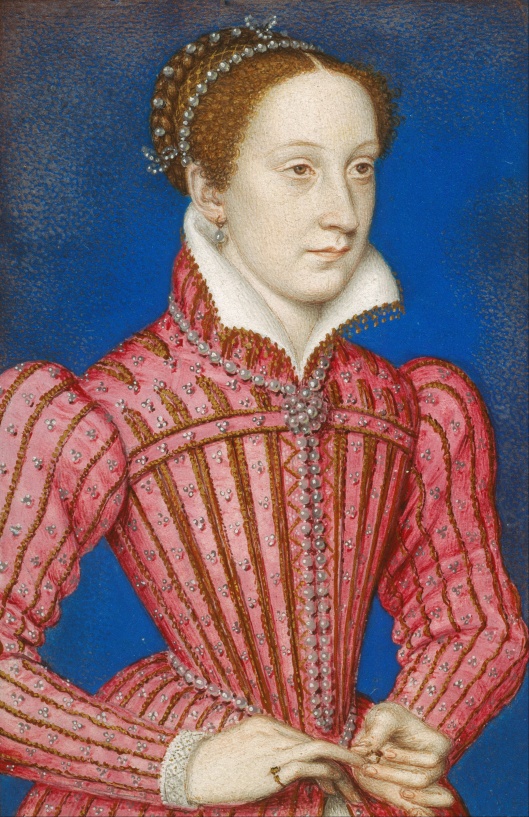Tags
Abdication, Earl of Lennox, Earl of Moray, Henry Stewart, James Bothwell, James Stewart, James VI of Scotland, Lord Darnley, Queen Elizabeth I of England, Queen Mary I of Scotland
In late January 1567, Queen Mary I of Scotland prompted her husband, Henry Stuart, Lord Darnley, King consort of Scotland to return to Edinburgh. He recuperated from his illness in a house belonging to the brother of Sir James Balfour at the former abbey of Kirk o’ Field, just within the city wall.
Mary visited him daily, so that it appeared a reconciliation was in progress. On the night of February 9–10, 1567, Mary visited her husband in the early evening and then attended the wedding celebrations of a member of her household, Bastian Pagez. In the early hours of the morning, an explosion devastated Kirk o’ Field. Darnley was found dead in the garden, apparently smothered. There were no visible marks of strangulation or violence on the body. James Hepburn, 4th Earl of Bothwell, James Stewart, 1st Earl of Moray (the illegitimate son of King James V), Secretary Maitland, the Earl of Morton and even Queen Mary herself were among those who came under suspicion.

However, by the end of February, Bothwell was generally believed to be guilty of Darnley’s assassination. Matthew Stewart, 4th Earl of Lennox, Darnley’s father, demanded that Bothwell be tried before the Estates of Parliament, to which Mary agreed, but Lennox’s request for a delay to gather evidence was denied. In the absence of Lennox and with no evidence presented, Bothwell was acquitted after a seven-hour trial on April 12. A week later, Bothwell managed to convince more than two dozen lords and bishops to sign the Ainslie Tavern Bond, in which they agreed to support his aim to marry the queen.
Between April 21 and 23, 1567, Mary visited her son, Prince James, at Stirling for the last time. On her way back to Edinburgh on April 24, Mary was abducted, willingly or not, by Lord Bothwell and his men and taken to Dunbar Castle, where he may have raped her. On May 6, Mary and Bothwell returned to Edinburgh. On May 15, at either Holyrood Palace or Holyrood Abbey, they were married according to Protestant rites. Bothwell and his first wife, Jean Gordon, who was the sister of Lord Huntly, had divorced twelve days previously.
Originally, Mary believed that many nobles supported her marriage, but relations quickly soured between the newly elevated Bothwell (created Duke of Orkney) and his former peers and the marriage proved to be deeply unpopular. Catholics considered the marriage unlawful, since they did not recognise Bothwell’s divorce or the validity of the Protestant service. Both Protestants and Catholics were shocked that Mary should marry the man accused of murdering her husband. The marriage was tempestuous, and Mary became despondent.
Twenty-six Scottish peers, known as the confederate lords, turned against Mary and Bothwell and raised their own army. Mary and Bothwell confronted the lords at Carberry Hill on June 15, but there was no battle, as Mary’s forces dwindled away through desertion during negotiations.
Bothwell was given safe passage from the field. The lords took Mary to Edinburgh, where crowds of spectators denounced her as an adulteress and murderer. The following night, she was imprisoned in Loch Leven Castle on an island in the middle of Loch Leven. Between July 20 and 23, Mary miscarried twins. On July 24, 1567, Mary was forced to abdicate in favour of her one-year-old son James. The infant King James VI of Scotland was placed under the regency of the Earl of Moray, while Bothwell was driven into exile. He was imprisoned in Denmark, became insane and died in 1578.
On May 2, 1568, Mary escaped from Loch Leven Castle with the aid of George Douglas, brother of Sir William Douglas, the castle’s owner. Managing to raise an army of 6,000 men, she met Moray’s smaller forces at the Battle of Langside on May 13. Defeated, Mary fled south. After spending the night at Dundrennan Abbey, she crossed the Solway Firth into England by fishing boat on May 16. She landed at Workington in Cumberland in the north of England and stayed overnight at Workington Hall. On May 18, local officials took her into protective custody at Carlisle Castle.
Mary had once claimed Elizabeth’s throne as her own and was considered the legitimate sovereign of England by many English Catholics, including participants in a rebellion known as the Rising of the North. Perceiving Mary as a threat, Elizabeth had her confined in various castles and manor houses in the interior of England. After eighteen and a half years in custody, Mary was found guilty of plotting to assassinate Elizabeth in 1586, and was beheaded the following year at Fotheringhay Castle. Mary’s life, marriages, lineage, alleged involvement in plots against Elizabeth, and subsequent execution established her as a divisive and highly romanticised historical character, depicted in culture for centuries.
